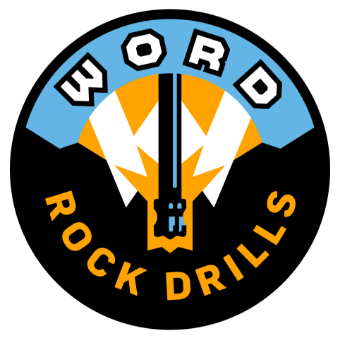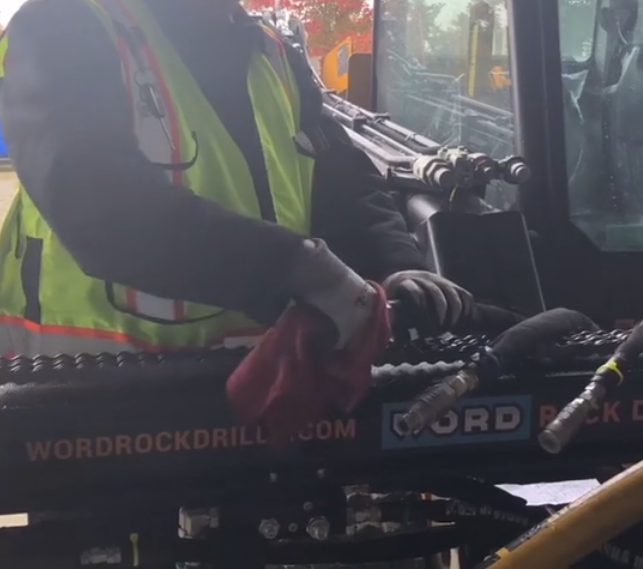| DO | Have properly installed whip checks on both ends of your airline | Having properly installed whip checks is important for the safety of both the drill operator and anyone else around the machine during operation. Whip checks are an additional piece added around the connection between the machine and the airline. These safety features prevent the air hose from lashing out, should it disconnect during use. |
| DO | Clean off your quick connects before attaching | Your drill will rarely stay clean on a job site. It’s just as unlikely that it will stay clean between jobs simply due to the elements that it may be exposed to while in storage. Under both circumstances, it is important to wipe off your quick connects before attaching them to your excavator or skid steer to prevent debris from entering your hydraulic lines. Watch a Video on Keeping Your Drill Hoses Clean |
| DO | Use the pressure wash feature of your mist pump to clean your machine at the end of each day | Did you know that if your drill has a mist pump system it can double as a pressure washer? That right! Your drill is equipped with a selector valve at the top right of the control panel that allows you to connect a quick coupler plug to a pressure washer wand. This setup makes it easy to wash down your machine at the end of each day so you can start fresh on your next shift. |
| DO | Use the feed extend feature when positioning your drill stinger | Using the feed extend allows for precise placement of the stinger on the ground to begin your hole. Using the stick and boom or skid steer arm to place the stinger can damage important parts of your machine and negatively impact its ability to drill. |
| DO | Check your line oiler regularly and refill with rock drill oil when needed | Rock drill oil is what makes the world go round … well at least in the drilling world it does! Keep a regular check on your rock drill oil levels throughout the workday and refill when needed to keep everything running smoothly. Watch our Line Oiler Video |
| DO | Make sure you have a secure hold on the machine before moving with a forklift | Picking up a drill with a forklift is a little bit more precarious than picking up your average pallet. Always make sure your forks are locked, have a spotter, and make sure you don’t have any hoses pinched before lifting the machine off! |
| DO | Grease your machine frequently | Grease, makes the world go round …. Well, maybe not, but it is the key to a happy rock drilling unit. A general rule of thumb for drilling is to grease your machine at the beginning of each day and repeat for every 4 hours of use from that point. |


